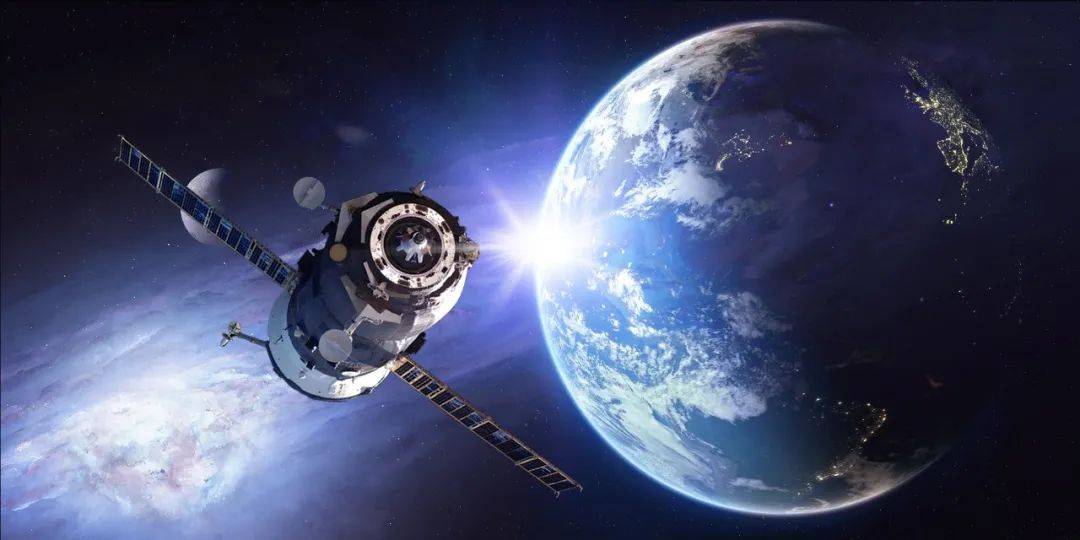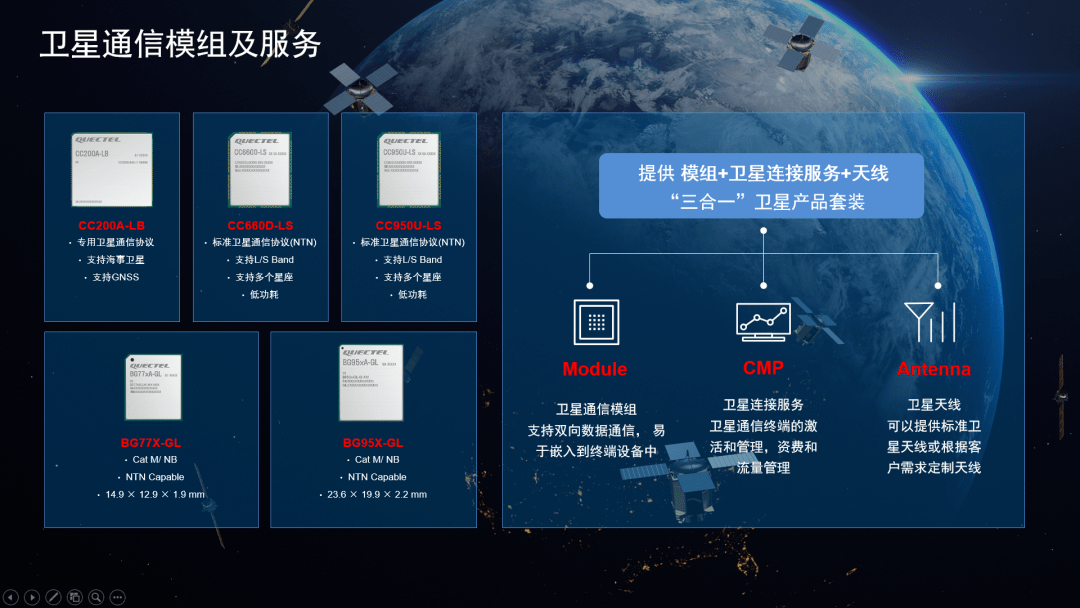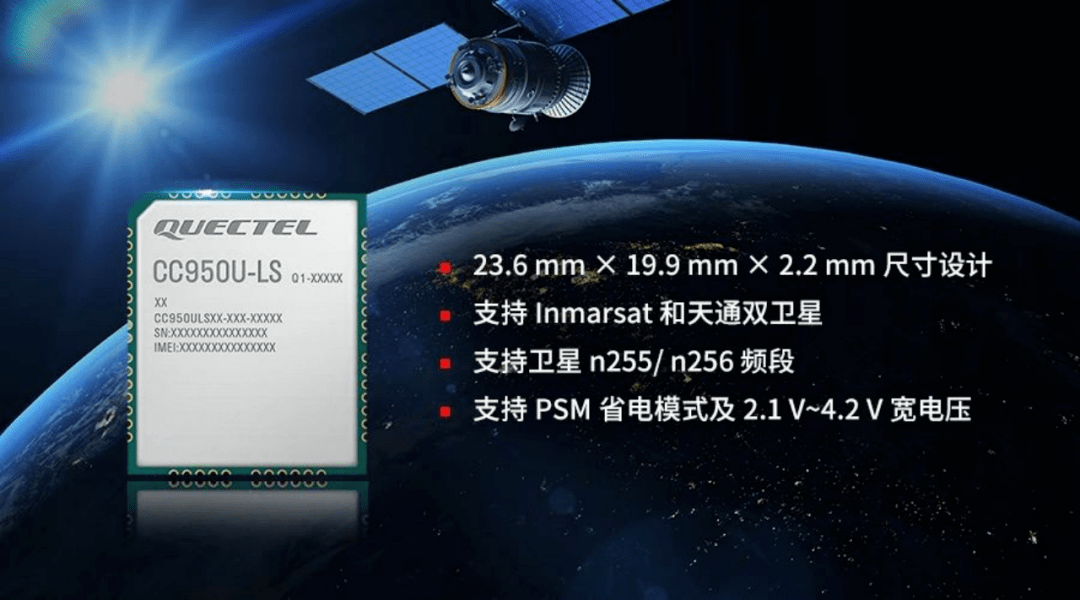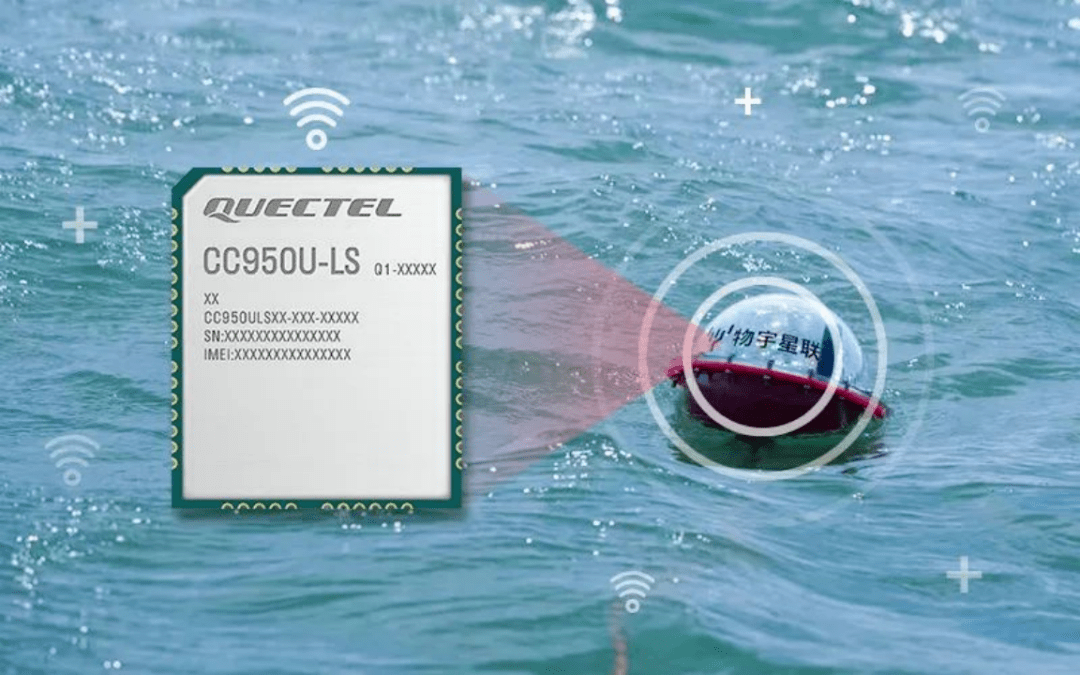 Technology peripherals
Technology peripherals
 AI
AI
 Satellite communication drives competition in the Internet of Things to rise. How can module manufacturers win the tens of billions market?
Satellite communication drives competition in the Internet of Things to rise. How can module manufacturers win the tens of billions market?
Satellite communication drives competition in the Internet of Things to rise. How can module manufacturers win the tens of billions market?
As early as the 1980s, broadcasting television signals and forwarding communication messages through satellites has become a mainstream trend. At that time, Motorola proposed a great idea - to build a global satellite phone network through a near-Earth constellation of 66 satellites, allowing users to make calls anywhere in the world, also known as Iridium. Star Project.
As we all know at the end of the story, due to limitations of the business model and technological maturity, this idea did not come to fruition. However, this attempt opened a "skylight" for the communication system and laid the foundation for the subsequent development of satellite communications.
After entering the 21st century, during the period of rapid development of cellular networks and the full explosion of smartphones, people began to pay attention to the issue of network coverage, which directly promoted the combination of satellite communication services and cellular network services. Especially after Elon Musk proposed the Starlink project in 2015, satellite communications have been further pushed into the public eye.
Since then, satellite technology has developed steadily, and since the 3GPP R17 standard was frozen in 2022, NTN (Non-Terrestrial Network, non-terrestrial network) technology has directly become a hot spot in the industry, and "mobile phone direct connection to satellite" has taken the lead in becoming a reality.
Subsequently, a number of mainstream mobile phone manufacturers announced their new products. With the heated discussion of "the advent of the mobile phone satellite era", the application of satellite communications in the field of Internet of Things has also received more and more attention. It will exert huge strategic value and economic benefits in many fields.
Two-wheel drive, satellite IoT drives the tens of billions market
As the scale of the Internet of Things grows, so does user demand for ubiquitous connectivity. Traditional mobile communication technology mainly relies on fixed cellular base stations on the ground to expand network coverage. This also results in vast forests, oceans, deep mountains, grasslands and other areas that are far away that cellular networks cannot reach.
According to statistics, the world’s existing mobile communication networks only cover 20% of the land surface and 6% of the total area of the earth. Therefore, the emergence of satellite IoT has established a new data transmission channel for scenarios that were previously unable to be covered by terrestrial networks.
In the past, due to the extremely high cost of satellite launches, people hoped that a satellite that could "stand high and see far" could achieve wider coverage. Therefore, high-orbit satellites (GEO) were often chosen for initial satellite communications. . However, with the upgrading and mass production of industrialized devices, the development cost of satellites has also been greatly reduced. In addition, the cost of rocket launches has been reduced. Low-orbit satellites have gradually become the mainstream trend of satellite IoT communications.
Data shows that the coverage area of a single low-orbit satellite generally ranges from a few hundred kilometers to thousands of kilometers in diameter. Its signal transmission distance is short, the transmission delay is small, the link loss is low, and the overall manufacturing cost is also lower. , so it is more suitable for carrying rich applications of satellite Internet of Things.

In June 2022, the 3
GPP R17 standard was frozen, and the non-terrestrial network NTN was introduced, using the satellite communication network as a necessary supplement to the terrestrial network. In addition to providing standards and specifications that support NTN based on 5G NR, R17 also provides standards and specifications that support the integration of IoT technologies such as NB-IoT and eMTC with NTN. NTN that supports the Internet of Things is mainly targeted at scenarios such as shipping, wilderness, energy collection, agriculture, and environmental monitoring where base stations cannot be deployed, or where base station deployment and maintenance are difficult and costly.
The freezing of the R17 standard undoubtedly opens a new stage of rapid development of the satellite Internet of Things. Market research organization IoT Analytics analyzed in its 2022 IoT market summary and future forecast report released in May this year that the number of satellite IoT connections is expected to grow from 6 million to 22 million between 2022 and 2027,The annual compound growth rate is 25%. Although the number of 22 million connections has a small impact on the overall market, some companies have begun to integrate satellite connections into chips, which will also significantly accelerate the application of satellite IoT. In addition, based on data from Omdia, ABI Research, McKinsey and other institutions,
it is estimated that by 2025, the output value of satellite IoT will reach US$560 billion to US$850 billion.According to the forecast of the Academy of Information and Communications Technology, the global satellite communication terminal market will reach US$10.9 billion by 2027.
Flowers are born, and the upstream and downstream of the industrial chain are actively deployedIndustrial application is always the best testing ground to test the maturity of technology. For the satellite Internet of Things, on the one hand can achieve tracking, control and management in deserts, oceans, forests and other areas that cannot be reached by cellular networks. For example, in scenarios such as heavy engineering equipment at construction sites, ocean-going ships, offshore oil wells, and global supply chain management of multinational groups, related equipment needs to be monitored and managed in real time, and the realization of these functions requires satellite networks. On the other hand, Satellite IoT can also serve as a redundant system for cellular IoT, filling in the gaps in time when the cellular network is unstable or difficult to fully cover. For example, fleet management applications currently mostly use cellular network connections. However, during fleet transportation, cellular network disconnection may occur due to network coverage, weather changes, network interference and other issues. Satellite IoT can ensure critical security when cellular signals are lost. Continuous delivery of data streams. In summary, the satellite IoT can be used in a variety of scenarios such as network communications in ocean shipping, mineral development, power generation, oil field production asset management, agricultural and forestry environmental monitoring, livestock loss monitoring, and geological disaster early warning. The module leader leads the way, and the application side is ready to go It is true that with the expansion of the market pie and the demand for application scenarios, more and more companies and capital will pay attention to the huge development space behind the satellite Internet of Things, and it will also become a new highland for competition in the Internet of Things industry. . As the global leader in cellular IoT modules, Quectel is also one of the first companies to deploy satellite IoT.
In March 2023, Quectel announced the launch of the CC200A-LB satellite communication module, and also specially provided a "three-in-one" satellite product package of "module satellite connection service antenna" , to help users quickly realize the overall design and accelerate the implementation of technology; 2In June 2023, led by China Telecom Satellite Corporation, Quectel Communications joined forces with upstream and downstream partners such as Unisoc, Penghu Wuyu, etc. A series of major 5G NTN (non-terrestrial network, non-terrestrial network) technology tests have been carried out at an industry-leading speed.
new satellite communication modules CC660D-LS and 3GPP NTN R17-compliant satellite communication modules during the 2023 Shanghai Mobile World Congress. The standard new 5G satellite communication module CC950U-LS provides a highly stable channel for IoT terminals to directly connect to satellites.
5G satellite communication module CC950U-LS is based on UNISOC’s first satellite communication SoC chip V8821, which uses advanced 22nm technology and integrates baseband and transceiver , power management integrated circuit (PMIC), FLASH/SRAM, etc., making CC950U-LS more advantageous in terms of power consumption, size, etc.
In addition, considering the complexity of terminal application scenarios, CC950U-LS adopts an LCC package that is easier to solder and has a classic 23.6 mm × 19.9 mm × 2.2 mm design, which greatly reduces customers’ development work when switching products. quantity.
It is worth mentioning that in view of the pain points of existing cellular communications such as blind spots in signal coverage and the inability to transmit information monitoring data in real time, According to Wang Peng, senior product manager of Quectel Communications, the smart buoy developed based on the CC950-LS module supports water body pH value detection, oxygen content detection, water temperature and conductivity detection, and can be used without the ground In areas covered by the Internet, water quality and hydrological information has been transmitted back through the satellite Internet of Things.
Write at the end




The above is the detailed content of Satellite communication drives competition in the Internet of Things to rise. How can module manufacturers win the tens of billions market?. For more information, please follow other related articles on the PHP Chinese website!

Hot AI Tools

Undresser.AI Undress
AI-powered app for creating realistic nude photos

AI Clothes Remover
Online AI tool for removing clothes from photos.

Undress AI Tool
Undress images for free

Clothoff.io
AI clothes remover

AI Hentai Generator
Generate AI Hentai for free.

Hot Article

Hot Tools

Notepad++7.3.1
Easy-to-use and free code editor

SublimeText3 Chinese version
Chinese version, very easy to use

Zend Studio 13.0.1
Powerful PHP integrated development environment

Dreamweaver CS6
Visual web development tools

SublimeText3 Mac version
God-level code editing software (SublimeText3)

Hot Topics
 Does Huawei P70Pro have satellite communication function? Does Huawei P70Pro support satellite communication?
Mar 20, 2024 pm 07:51 PM
Does Huawei P70Pro have satellite communication function? Does Huawei P70Pro support satellite communication?
Mar 20, 2024 pm 07:51 PM
Satellite communication refers to the technology that uses artificial earth satellites as relay stations to forward radio signals and realize radio communications on the earth. So does Huawei P70Pro have satellite communication function? Let me introduce it to you in detail below. Does Huawei P70Pro have satellite communication function? All series support satellite communication. Huawei P70Pro introduces the Beidou satellite communication system, which is a major breakthrough for Huawei in communication technology. The Beidou satellite communication system provides higher-precision positioning services and stable communication capabilities, greatly improving Huawei's competitiveness in the global mobile phone market. Huawei P70Pro introduces the Beidou satellite communication system, which not only makes a breakthrough in communication technology, but also brings a new user experience to users. Whether in the city or in remote areas
 Xiaomi Mi 14 Pro titanium version is more expensive than Ultra. Does satellite communication give you the courage?
Mar 15, 2024 am 11:01 AM
Xiaomi Mi 14 Pro titanium version is more expensive than Ultra. Does satellite communication give you the courage?
Mar 15, 2024 am 11:01 AM
Since satellite communication was popularized by Huawei Mate60Pro, this feature has become a standard feature of almost every brand’s flagship mobile phone. On February 22, Xiaomi’s latest ultra-large flagship Xiaomi 14Ultra series comes standard with two-way satellite communication functions. It supports direct connection of mobile phones to Tiantong satellites, real-time voice and two-way text messages, and the official claims that it is stronger than Huawei Mate60Pro in this field. . Source: Xiaomi’s latest news is: Xiaomi has added a two-way satellite communication function to the titanium version of Xiaomi 14Pro released last year, and also brought a titanium version to Xiaomi 14Ultra, which already comes with two-way satellite communication as standard, and both are now on the shelves. Xiaomi Mall is on sale for the first time, among which Xiaomi 14Ultra Titanium Special Edition is only available in 16GB and 1TB units.
 Christie: dual drive of technology + innovation brings unlimited possibilities
Apr 23, 2024 am 08:10 AM
Christie: dual drive of technology + innovation brings unlimited possibilities
Apr 23, 2024 am 08:10 AM
As a technology company driven by innovation, Christie is able to provide comprehensive solutions, rich industry experience and a complete service network in intelligent audio-visual technology. At this year's InfoCommChina, Christie brought RGB pure laser projectors, 1DLP laser projectors, LED video walls, and content management and processing solutions. At the event site, a large-scale customized outer spherical dome specially designed for astronomical displays became the focus of the scene. Christie named it "Sphere Deep Space", and the Christie M4K25RGB pure laser projector gave it "green vitality" . Mr. Sheng Xiaoqiang, senior technical service manager of the Commercial Business Department in China, said: It is not difficult to realize an outer spherical dome projection, but it can be made smaller and the color
 How IoT sensors and AI are revolutionizing smart buildings
Apr 12, 2024 am 09:10 AM
How IoT sensors and AI are revolutionizing smart buildings
Apr 12, 2024 am 09:10 AM
With the continuous development of smart technology, smart buildings have become a powerful force in today's construction industry. In the rise of smart buildings, Internet of Things (IoT) sensors and artificial intelligence (AI) have played a crucial role. Their combination is not just a simple technical application, but also a complete subversion of traditional building concepts, bringing us a more intelligent, efficient and comfortable building environment. Over the past few years, and especially in the wake of the COVID-19 pandemic, the challenges facing building management have increased and evolved as expectations for facilities managers have changed and viability needs have expanded. The shift to more integrated and flexible work environments within offices is also changing the way commercial buildings are used, requiring real-time visibility into building usage, occupant trends
 Vivo's first satellite communication phone! Vivo X100 Ultra top-end network access: supports Tiantong No.1
Apr 27, 2024 am 09:40 AM
Vivo's first satellite communication phone! Vivo X100 Ultra top-end network access: supports Tiantong No.1
Apr 27, 2024 am 09:40 AM
According to news on April 27, the top version of vivoX100Ultra has officially entered the network, with model number "V2366HA" and supports 80W wired fast charging. The biggest difference between the top version and the ordinary version is satellite communication. The name of the network access device is "Tiantong No. 1 Satellite Mobile Communication System Terminal" instead of the conventional "5G mobile phone". vivoX100Ultra will be connected to China Telecom's Tiantong-1 satellite system, which can realize communication by phone and text message, and can also enable emergency communication even when there is no network or signal. It is worth noting that this is also vivo’s first satellite communication phone in history. In addition, the aircraft’s imaging performance will also set a new record.
 The role of Golang technology in mobile IoT development
May 09, 2024 pm 03:51 PM
The role of Golang technology in mobile IoT development
May 09, 2024 pm 03:51 PM
With its high concurrency, efficiency and cross-platform nature, Go language has become an ideal choice for mobile Internet of Things (IoT) application development. Go's concurrency model achieves a high degree of concurrency through goroutines (lightweight coroutines), which is suitable for handling a large number of IoT devices connected at the same time. Go's low resource consumption helps run applications efficiently on mobile devices with limited computing and storage. Additionally, Go’s cross-platform support enables IoT applications to be easily deployed on a variety of mobile devices. The practical case demonstrates using Go to build a BLE temperature sensor application, communicating with the sensor through BLE and processing incoming data to read and display temperature readings.
 Innovative uses of C++ in satellite communications systems
May 31, 2024 pm 06:43 PM
Innovative uses of C++ in satellite communications systems
May 31, 2024 pm 06:43 PM
C++ is used innovatively for satellite mission planning, telemetry processing and image processing in satellite communication systems due to its efficiency, cross-platform compatibility and modularity, for example: developing complex satellite mission planning algorithms and optimizing position, attitude and operating modes , extending satellite life. Process telemetry data, detect anomalies and send alerts. Use algorithms to process satellite images for mapping, weather forecasting, and environmental monitoring.
 Xiaomi's first vertical folding flagship! Xiaomi MIX Flip connects to the Internet: supports satellite communication
May 03, 2024 pm 03:34 PM
Xiaomi's first vertical folding flagship! Xiaomi MIX Flip connects to the Internet: supports satellite communication
May 03, 2024 pm 03:34 PM
According to news on May 3, a new Xiaomi phone model "2405AVPB7C" has recently been connected to the network of the Ministry of Industry and Information Technology and supports Tiantong satellite communication system. Based on previous revelations, this new phone is likely to be Xiaomi's first vertical folding flagship - Xiaomi MIX Flip. It was previously reported that the high-end configuration of the aircraft will support satellite communications, which can ensure continuous connection in emergencies. It is currently the standard configuration of mainstream high-end flagships. The low-end version will cancel the satellite communication system and the price will be relatively reduced. Users can choose according to their own needs. In other aspects, MIX Flip will also use a domestic screen and be equipped with zero-sensing crease technology to make the screen at the crease flatter. The design adopts a dual-screen solution. After folding, there is





